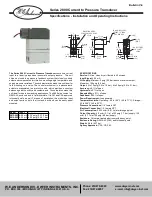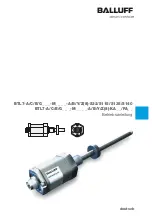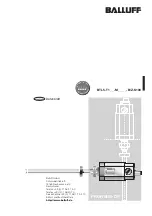
FCC ID: K66FT-857
Operating Manual
Vertex Standard Co., Ltd.
9
Always locate antennas such that they can never come in contact with outdoor power lines in the event of a catastrophic
support or power-pole structural failure. Ground your antennas’ support structure(s) adequately, so as to dissipate energy
absorbed during a lightning strike. Install appropriate lightning arrestors in the antenna coaxial cables (and rotator cables,
if rotary antennas are used).
In the event of an approaching electrical storm, disconnect all antenna lead-in, rotator cables, and power cables
completely from your station if the storm is not immediately in your area. Do not allow disconnected cables to touch the
case of your FT-857 transceiver or accessories, as lightning can easily jump from the cable to the circuitry of your
transceiver via the case, causing irreparable damage. If a lightning storm is in progress in your immediate area, do not
attempt to disconnect the cables, as you could be killed instantly if lightning should strike your antenna structure or a
nearby power line.
If a vertical antenna is utilized, be certain that humans and/or pets and farm animals are kept away both from the radiating
element (to prevent electrical shock and RF exposure danger) and the ground system (in the event of an electrical storm).
The buried radials of a ground-mounted vertical antenna can carry lethal voltages outward from the center of the antenna
in the event of a direct lightning strike.
RF Field Exposure
This transceiver is capable of power output in excess of 50 Watts, so customers in the United States may be required to
demonstrate compliance with Federal Communications Commission (FCC) regulations concerning maximum permissible
exposure to radio frequency energy. Compliance is based on the actual power output used, feedline loss, antenna type and
height, and other factors which can only be evaluated as a system.
Information regarding these regulations may be available from your Dealer, your local radio club, from the FCC directly
(press releases and other information can be found on the FCC’s site on the World Wide Web at <http://www.fcc.gov>),
or from the American Radio Relay League, Inc. (225 Main St., Newington CT 06111 or <http://www.arrl.org>).
Although there is negligible radio frequency (RF) leakage from the FT-857 transceiver itself, its antenna system should be
located as far away from humans and animals as practicable, so as to avoid the possibility of shock due to accidental
contact with the antenna or excessive long-term exposure to RF energy. During mobile operation, do not transmit if
someone is standing adjacent to your antenna, and use the lowest power possible.
Never stand in front of an antenna (during testing or operation) when RF power is applied, especially in the case of 430
MHz directional arrays. The 20 Watt power output supplied by the FT-857, combined with the directivity of a beam
antenna, can cause immediate heating of human or animal tissues, and may cause other undesirable medical effects.
Electromagnetic Compatibility
If this transceiver is used with, or in the vicinity of, a computer or computer-driven accessories, you may need to
experiment with grounding and/or Radio Frequency Interference (RFI) suppression devices (such as ferrite cores) to










































